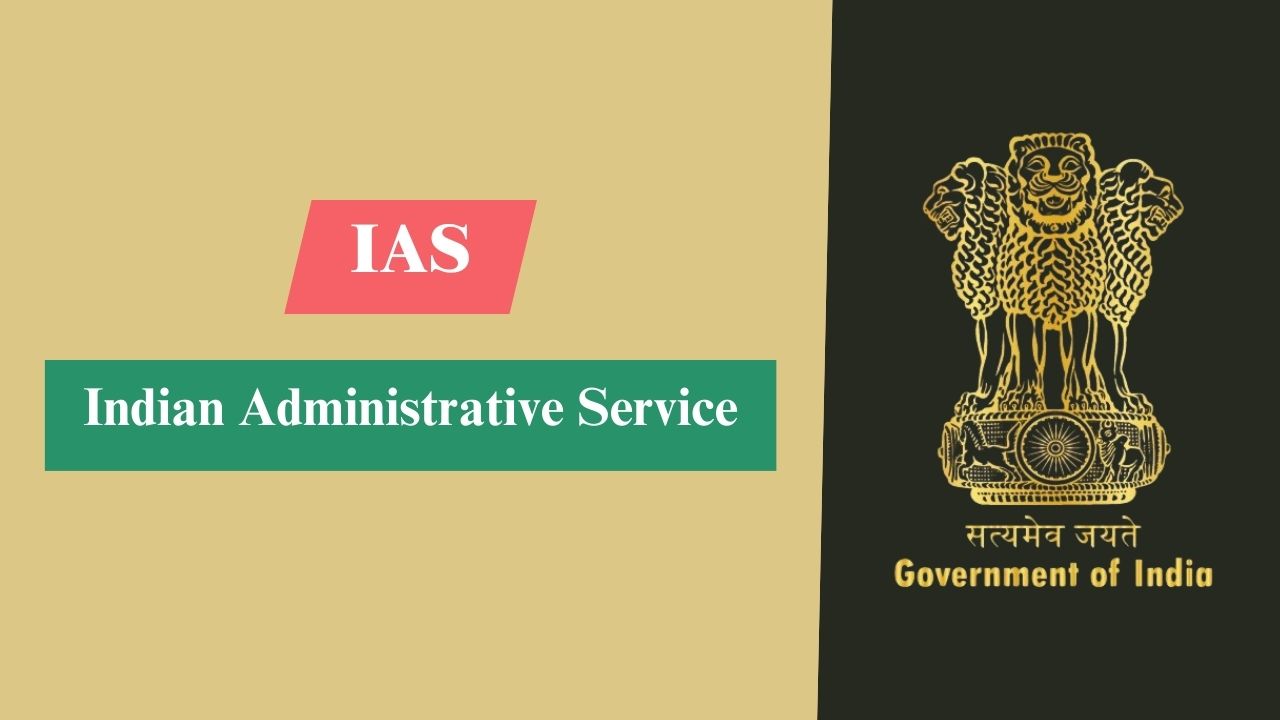What is IIM CAT Entrance Exam? - Full Form, Exam Pattern & Toppers list

What is CAT Entrance Exam?
The full form of CAT exam is Common Admission Test. It is one of the most prestigious management entrance exams in India, which is conducted every year by the Indian Institutes of Management (IIMs) for admission to postgraduate level students in IIMs and other B-grade schools of India.
The CAT exam is a standardized test that assesses the candidates management skills, analytical ability and logical thinking. Through this examination, IIMs evaluate all candidates on a uniform basis, thereby maintaining fairness and quality in competitive management courses.
CAT score plays a vital role in the initial shortlisting process for admission to the prestigious Indian Institutes of Management (IIMs). Candidates are first evaluated based on their CAT exam performance, and those who meet the cutoff are invited to the next stages like Group Discussion (GD), Written Ability Test (WAT) and Personal Interview (PI).
CAT (Common Admission Test) is considered one of the toughest competitive exams in India. The questions in the exam are complex, and the time to solve them is limited. It requires not only accuracy but also quick thinking and time management skills. The competition is very intense as thousands of candidates compete for a limited number of seats. Therefore, thorough preparation and consistent effort is required to succeed in the CAT exam and get admission into top IIMs.
What is IIM?
The full form of IIM is Indian Institute of Management (IIM). It is one of the reputed business schools in India, offering MBA, PGDM, PGP and other management related courses. IIM is a premier educational institute under the Union Ministry of Education, Government of India. IIMs are renowned for their industry linkages, research opportunities and global experience, through which graduates get better placements and higher salaries in multinational companies.
Purpose of CAT Exam
The main purpose of CAT exam is to evaluate the candidate's mathematical ability, logical reasoning, verbal ability, data interpretation and decision making ability. CAT comprehensively tests the candidate's abilities like problem-solving ability, time management and determination, which are considered essential for success in MBA and other management courses.
CAT Exam Summary
| Detail | Information |
|---|---|
| Exam Name | CAT Exam |
| Full Form | Common Admission Test (CAT) |
| Conducting Body | Indian Institutes of Management (IIM) |
| Purpose | Admission to MBA/PGDM programs |
| Target Candidates | Graduate students in any discipline |
| Exam Level | National |
| Official Website | Website |
| Frequency | Once a year |
| Application Mode | Online |
CAT Exam Eligibility Criteria
| Detail | Information |
|---|---|
| Educational Qualification | Candidates must have a bachelor degree from a recognized university. |
| Age Limit | No upper age limit |
| Minimum Percentage |
|
| Number of Attempts | No-limit |
CAT Exam Pattern
CAT (Common Admission Test) is conducted every year for admission to premier management institutes of India (like IIMs). If you want to get admission in MBA or PGDM course, it is very important to understand the CAT exam pattern. This exam is computer based and consists of the following three sections in total. All these three sections are conducted on the same day and in the same session.
- Verbal Ability and Reading Comprehension (VARC)
- Data Interpretation and Logical Reasoning (DILR)
- Quantitative Ability (QA)
| Mode of Exam | Computer-based test (CBT) |
| Section |
|
| Duration of Exam | 120 minutes (2 hours) |
| Type of Question | Multiple Choice Questions (MCQ) & Non-MCQ |
| Total Questions | 68 |
| Total Marks | 204 marks |
| Section wise Questions |
|
| Section wise marks |
|
1. Verbal Ability and Reading Comprehension (VARC)
CAT (Common Admission Test) is conducted every year for admission to premier management institutes of India (like IIMs). If you want to get admission in MBA or PGDM course, it is very important to understand the CAT exam pattern. This exam is computer based and consists of the following three sections in total. All these three sections are conducted on the same day and in the same session.
| Mode of Exam | Computer-based test (CBT) |
| Duration of Exam | 40 minutes |
| Type of Question | Multiple Choice Questions (MCQ) & Non-MCQ |
| Total Questions | 24 |
| Total Marks | 72 marks |
2. Data Interpretation and Logical Reasoning (DILR)
Data Interpretation and Logical Reasoning(DILR) is the second section of the CAT exam. This section evaluates the analytical, problem solving and logical reasoning skills of the candidate. This section is of 40 minutes duration in which a total of 20 questions of MCQ and Non-MCQ type are asked.
| Mode of Exam | Computer-based test (CBT) |
| Duration of Exam | 40 minutes |
| Type of Question | Multiple Choice Questions (MCQ) & Non-MCQ |
| Total Questions | 22 |
| Total Marks | 66 marks |
3. Quantitative Ability (QA)
Quantitative Ability (QA) is the third and final section of the CAT exam. This section evaluates the candidate's mathematical ability and problem solving skills. This section is also of 40 minutes in which a total of 22 questions of MCQ and non-MCQ type are asked.
| Mode of Exam | Computer-based test (CBT) |
| Duration of Exam | 40 minutes |
| Type of Question | Multiple Choice Questions (MCQ) & Non-MCQ |
| Total Questions | 22 |
| Total Marks | 66 marks |
CAT Exam Selection Process
The selection process of CAT exam is quite different from other MBA colleges. That is, CAT exam is only the first step for admission in IIM. Based on the CAT score, candidates are shortlisted for further selection process. This process usually consists of stages like GD (Group Discussion), WAT (Written Ability Test) and PI (Personal Interview).
Every IIM and other top MBA colleges release their own cut-off list, which includes both the overall CAT score and the sectional scores. After the CAT results are released, the IIM institutes call the qualified candidates, in which they have to go through the below mentioned stages:
1. Group Discussion (GD)
Group Discussion (GD) is a part of the selection process after the CAT exam. In GD, 8-10 candidates are given a topic, in which everyone expresses their views. To perform well in GD, one has to speak on time, listen to others and put forward logical points. The purpose of this process is to test the communication skills, leadership quality, teamwork and critical thinking of the candidates.
2. Written Ability Test (WAT)
Written Ability Test (WAT) is a short essay writing test in which candidates have to write their views on a current topic, social issue or abstract topic within a time limit. Its purpose is to test the writing skills, clarity of thought, content organization and analytical thinking of the candidates.
3. Personal Interview (PI)
Personal Interview (PI) is an important stage after CAT. In this, the interview panel questions the candidate about his educational background, personality, goals, strengths, weaknesses and current affairs.
Courses Offered through CAT Exam
CAT (Common Admission Test) is not only the medium of admission to IIMs but also to many top management programmes. Here are some of the major courses offered based on CAT scores:
- MBA (Master of Business Administration): MBA is the most commonly pursued course through CAT. It is a two-year post graduate degree program available in various specializations.
- PGDM (Post Graduate Diploma in Management): PGDM course is equivalent to MBA but it is called diploma because this course is offered by institutes which are not universities.
- PGP (Post Graduate Programme in Management): PGP is the flagship two-year course of IIMs which is similar to MBA.
- Executive MBA / PGPX: This course is especially for professionals with 5+ years of work experience.
- FPM (Fellow Programme in Management) / Ph.D: FPM or Ph.D is for those students who want to pursue a career in research or teaching.
- ePGP (Executive Post Graduate Programme) / Online MBA: This program is for working professionals who wish to study management in part-time or online mode.
List of IIM and Non-IIM accepting CAT Score
CAT (Common Admission Test) is one of the most prestigious and competitive MBA entrance exams in India. Through this exam, candidates get admission to the premier management institutes of the country. CAT scores are not only used for admission to IIMs (Indian Institutes of Management), but many top-tier Non-IIM B-Schools also accept it.
Below is a list of some of the leading IIMs and Non-IIM colleges that offer admission to MBA and other management programs based on CAT exam scores.
1. IIM
There are a total of 21 IIMs in India that offer admission to MBA/PGP programmes through CAT scores:
| Sr.no | IIM Name | Location | Established |
|---|---|---|---|
| 1 | IIM Ahmedabad | Gujarat | 1961 |
| 2 | IIM Calcutta | West Bengal | 1961 |
| 3 | IIM Bangalore | Karnataka | 1973 |
| 4 | IIM Lucknow | Uttar Pradesh | 1984 |
| 5 | IIM Indore | Madhya Pradesh | 1996 |
| 6 | IIM Kozhikode | Kerala | 1996 |
| 7 | IIM Shillong | Meghalaya | 2007 |
| 8 | IIM Rohtak | Haryana | 2009 |
| 9 | IIM Ranchi | Jharkhand | 2009 |
| 10 | IIM Raipur | Chhattisgarh | 2010 |
| 11 | IIM Trichy (Tiruchirappalli) | Tamil Nadu | 2011 |
| 12 | IIM Udaipur | Rajasthan | 2011 |
| 13 | IIM Kashipur | Uttarakhand | 2011 |
| 14 | IIM Amritsar | Punjab | 2015 |
| 15 | IIM Sambalpur | Odisha | 2015 |
| 16 | IIM Sirmaur | Himachal Pradesh | 2015 |
| 17 | IIM Nagpur | Maharashtra | 2015 |
| 18 | IIM Visakhapatnam | Andhra Pradesh | 2015 |
| 19 | IIM Bodh Gaya | Bihar | 2015 |
| 20 | IIM Jammu | Jammu & Kashmir | 2016 |
| 21 | IIM Mumbai | Maharashtra | 2023 |
2. Non-IIM
Below is the list of top Non-IIM institutes that offer admission to MBA or PGDM courses based on CAT scores:
CAT Exam Toppers
| Year | Name |
|---|---|
| 2012 | Rajesh Balasubramanian |
| 2013 | Abhiram Iyer |
| 2014 | Neha Manglik |
| 2015 | Prateek Bajpai |
| 2016 | Avidipto Chakraborty |
| 2017 | Sai Praneeth Reddy |
| 2018 | Rounak Majumdar |
| 2019 | Lakshya Kumar |
| 2020 | Ekansh Agarwal |
| 2021 | Yash Mandhana |
| 2022 | Sunil Singh Rathod |
| 2023 | Kartik Bhageria |
CAT Exam Facts
- Many people think that 100 percentile means 100/100 marks, but in reality it is just a ranking percentage, meaning that the candidate scored better than everyone else.
- The paper pattern and sectional time limit of CAT changes from year to year. CAT is not an adaptive test.
- Unlike GMAT which is an adaptive exam, CAT is a fixed paper-based online test in which all candidates get the same questions.
- The validity of CAT score is only 1 year, meaning the CAT score is valid only for that one year. You will have to appear for the exam again next year.
- There is no upper age limit in CAT. You can appear for CAT exam at any age, you just need to complete your graduation. CAT also has typing questions.
- In some questions you have to type the answer, which is called TITA (Type In The Answer).
CAT Exam Advantages
- Top Management Institutes: CAT is one of the top entrance exams in india, through this exam candidates can get admission in indias top prestigious institutes like IIMs.
- Skill Development: Analytical, problem solving and time management skills of candidates preparing for CAT improve.
CAT Exam Disadvantages
- High Competition: CAT is a national level entrance exam which is applied by lakhs of candidates every year.
- Intensive Preparation: To get admission in top IIMs the candidates score has to be good for which the candidate has to study well.
- Work Balance: It is difficult for working professionals to balance job and CAT preparation.
Quick Links
- Common Admission Test (CAT) Exam
- Central Teacher Eligibility Test (CTET) Exam
- IISER Apptitude Test (IAT) Exam
- JEE Advanced Exam
- JEE Mains Exam
- National Entrance Screening Test (NEST) Exam
- National Talent Search Examination (NTSE) Exam
- RRB Junior Engineer (JE) Exam
- RRB Non-Technical Popular Categories (NTPC) Exam
- SBI Junior Associate (Clerk) Exam
- SBI Probationary Officer (PO) Exam
- Staff Selection Commission Combined Graduate Level (SSC CGL) Exam
- Staff Selection Commission Multi Tasking Staff (SSC MTS) Exam
- SSC CGL Assistant Audit Officer (AAO)
- SSC CGL Assistant Enforcement Officer (AEO)
- SSC CGL Assistant Section Officer in Central Secretariat Service (ASO in CSS)
- SSC CGL Assistant Section Officer in Ministry of External Affairs (ASO in MEA)
- CBI Sub Inspector (SI)
- SSC CGL Central Excise Inspector
- Indian Administrative Service (IAS)
- SSC CGL Income Tax Inspector (ITI)
- SSC CGL Junior Statistical Officer (JSO)
- SSC CGL Preventive Officer (PO)
- RRB NTPC Railway Station Master
- BE/BTech Aerospace Engineering Course
- Bachelor of Business Administration (BBA) Course
- Bachelor of Computer Applications (BCA) Course
- Bachelor of Commerce (B.Com) Course
- Bachelor of Computer Science (BCS) Course
- Bachelor of Hotel Management (BHM) Course
- Bachelor of Science in Biotechnology (BSc Biotechnology) Course
- Bachelor of Science in Chemistry (BSc Chemistry) Course
- Bachelor of Science in Forensic Science (BSc Forensic) Course
- Bachelor of Science in Microbiology (BSc Microbiology) Course
- Bachelor of Science in Nursing (BSc Nursing) Course
- BE/BTech in Civil Engineering Course
- ITI Computer Operator and Programming Assistant (COPA) Course
- ITI Cutting & Sewing (Tailoring) Course
- ITI Electrician Trade Course
- ITI Electronic Mechanic Course
- ITI Fitter Trade Course
- ITI Hair & Skin Care (Beautician) Course
- ITI Digital Photography Course
- ITI Plumber Course
- ITI Surveyor Course




